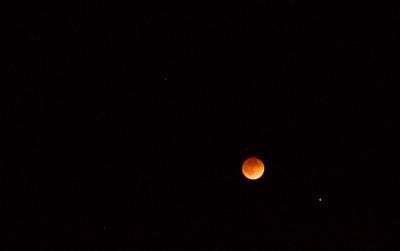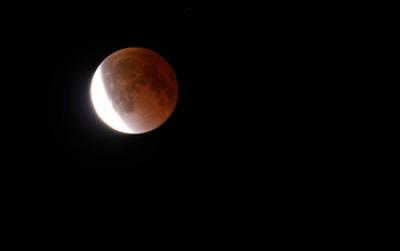Monday night's lunar eclipse proved just as delightful as expected to those able to view it. On the East Coast, cloudy skies may have gotten in the way, but at the National Science Foundation's National Optical Astronomy Observatory (NOAO) near Tucson, Ariz., the skies offered impressive viewing, as seen from the pictures provided here.

Lunar eclipse and more! Mars shines bright in the upper right of the image, and the star Spica from the constellation Virgo is below the moon. Additionally, 76 Virginis is just barely above the moon, too. Photo Credit: Robert Sparks, NOAO)
"The study of the color of lunar eclipses can be used to understand dust in the stratosphere including the amount and particle size of dust injected by volcanic eruptions," he said. "Understanding the amount of dust can help scientists create better models of climate change."
For those who missed this lunar eclipse, fear not. Three more are to occur fairly soon: Oct. 8, 2014; April 4, 2015 and Sept. 27, 2015.

The lunar eclipse over Tucson, Ariz.
(Photo Credit: Stephen Pompea, NOAO)
Source: National Science Foundation